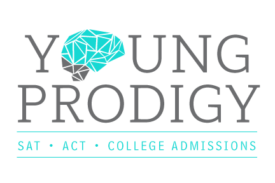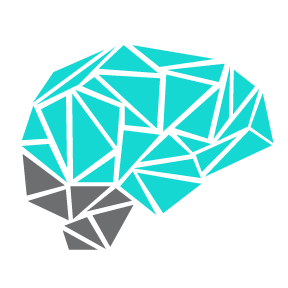I was re-watching one of my favorite movies tonight. Pulp Fiction by Quentin Tarantino. I love the scene where Samuel L. Jackson’s character goes ape-crazy, pulls out his gun, and screams at the man he’s about to execute, “English, mofo. Do you speak it?!” That’s got to be one of the greatest catchphrases in cinema history.
Now, it’s understandable that a man with a gun to his head can only manage some incoherent mumbling. But if you’re reading this, then I know you speak English. There’s a high chance you’re even a native English speaker. So isn’t it strange that the SAT is in English, the stories are in English, the questions are in the English, and the answer choices are in English, yet people still struggle on this section?
There’s good reason why critical reading is arguably the hardest section to improve on. It’s because there’s a huge difference between colloquial English and academic English. Whereas math and grammar are about learning a limited number of black and white formulas or rules, reading is a huge wild card.
As Forrest Gump’s mom liked to say, “Life is like a box of chocolates.” You never know what kinds of stories you’re going to get.
That uncertainty scares students. On some passages, a student scores amazingly well because the stories just make sense. But then they hit that one particular story. It makes no sense. And if the story doesn’t make sense, what hope is there at answering the questions correctly?
There’s no hope. Obi-Wan Kenobi is dead.
That’s why it’s imperative to understand what you read.
Doing well on critical reading boils down to one core skill: making sense of the senseless. We have to learn to understand what we don’t, to read what we can’t (yet).
The ability to do so splits students into two distinct camps.
Camp #1 kids generally don’t understand what they read.
Everything is in English, but the words strung together in a sentence make no sense to these students. The paragraphs fly over their heads. These students read a paragraph or two and realize they just wasted several minutes comprehending nothing. Maybe it’s because they zoned out, but more likely, they simply haven’t developed the skill to understand these difficult passages.
Camp #2 kids generally do understand what they read.
Sure, there may be a couple sentences here and there that are tricky, but these students can usually grasp the gist of the story. If I ask them what the story is about, they don’t merely tell me the topic of the story. Instead, they can relate the specific ideas and complications presented in the story.
For example, a story might be about dogs and their sense of smell. That’s just the TOPIC of the passage. But what point is the author trying to make about dogs and their sense of smell?
Camp #2 students will tell me the point was to explain how the dogs perceive things about the world mainly through their noses, while humans do so through sight.
See the big difference? Camp #1 saw dogs mentioned in the story, so they gather that the story is about dogs. But Camp #2 can actually explain what POINT about dogs the story was making.
If you’re not in camp #2 yet, there simply is no chance of scoring above a 650 in critical reading. You might not even break 600 – that’s the harsh truth.
Unfortunately, many of the students I work with start off squarely in camp #1. To remedy their situation and upgrade them to camp #2, my job is to help them understand what they don’t (yet) understand. That involves helping them develop the ability to self-identity their own weaknesses.
Here’s how that works:
-
Realize THAT you don’t understand something you’ve read.
Luckily, most people easily realize when they don’t totally understand something they’ve read. It’s exceedingly rare for someone to confidently believe he understood a line correctly, only to later realize he interpreted the line wrong. There’s likely going to be some doubt if you don’t understand a line. Sometimes, you might think you understood a line, but you won’t be 100% confident that you’re right—that bit of uncertainty is a good sign because it shows that you recognize there is something confusing about that sentence.
-
Identify WHERE the difficulty occurred.
Was it a particular word, sentence, paragraph, transition, etc.? In which exact lines or phrases did the confusion occur? Usually it’s not the whole sentence that doesn’t make sense. You will understand a few phrases within the larger sentence. But you struggle to put all those phrases together to form a coherent idea. So pinpoint where, exactly, the confusion lies. Which specific words or phrases?
Don’t just say you don’t understand the whole sentence or the whole paragraph – because that’s lazy. If you don’t understand an entire sentence, it’s only because you don’t speak/read English at all. True learning happens when you’re patient with yourself and break things down into bite-sized, understandable chunks. I guarantee you understand a few phrases here and there. Later, we’ll work on putting them all together logically.
-
Identity WHAT caused the confusion?
Was it because you didn’t know a particular vocab word? Or because the sentence you just read seemed to contradict a point the passage made earlier? Or because you’re not sure why this sentence was even included or what purpose it serves? Or because you don’t see the logically flow of the story’s structure, so everything seems like a random mess of unrelated ideas? Maybe a transition doesn’t seem to make sense? Or you’re not sure who’s speaking or whose point of view it is anymore? Once you know WHAT the confusion is, you can begin to figure out HOW to make sense of the issue.
-
Develop strategies to resolve each specific point/type of confusion.
These strategies comprise the majority of my reading instruction I give to my students. There’s nothing sexy or mind-blowing about these techniques. They aren’t revolutionary. Instead, they are the fundamental reading skills you need to develop before any other strategy will even help at all.
There is no substitute for reading practice. The solution is to read more SAT level material, which is what you’re going to face in college. And Sparknotes isn’t going to help you then because the texts you read in college are probably not featured on the site.
But the thing is, reading more doesn’t mean reading better. You could read a thousand stories and come out none the better IF you haven’t consciously practiced the right reading strategies.
Because there’s reading, and then there’s absorbing. To absorb, you need guided practice, a new way to that lets you know what to look for when you approach passages. You need methods to help you stitch together complex ideas into coherent thoughts.
Finding the main idea, understanding why the author said something, identifying who said what…all of these things are unglamorous yet absolutely essential.
—–
Now, there are some unscrupulous tutors and companies out there brazen enough to claim that the SAT reading stories are easy. It’s just a matter of learning some special tricks, they promise…and of course, these companies conveniently happen to know those secrets (give me a break, please).
They’ll even claim that the questions are easy because most students can understand what they’re being asked. So what’s hard then? According to these unsavory tutors, it’s the answer choices that are truly difficult.
To that I say, “You obviously don’t have much experience with the entire spectrum of students.”
Having worked with hundreds of students of all skill levels, I can confidently tell you that the vast majority of high school students do not understand the SAT stories (or even much easier ACT ones).
Yes, it’s true. The answer choices are tricky. They are all carefully designed to sound plausible. But if your biggest struggle is deciding between two answer choices that both sound pretty good, you’re probably already scoring above 600 or 650 (or 27+ on the ACT). For the majority of students, the main problem is that they don’t actually understand much of what they read.
This is where I see English programs failing miserably at most schools. By the time kids are in 10th or 11th grade, students are just assumed to know how to read. So the class is devoted to analysis and debate of dense texts. It’s no wonder the essays these kids turn in are so horrible – how can we expect them to have deep responses when half of them don’t even truly understand the books they’ve been assigned?
That’s why Critical Reading is the hardest needle to budge. Everyone wants to know how to deal with the traps in the answer choices, but no one wants to learn how to read.
And if you’re wondering, I’m not a fan of annotating or taking notes in the margins, a popular strategy some tutors teach. If students don’t understand what they read, then the notes they write are going to be incorrect interpretations of the text, and thus completely useless (even harmful).
Let’s learn to walk before we run, shall we? Let’s learn to decipher the things we can’t understand.
Now it’s your turn. Leave a comment below and tell me your single biggest frustration with reading. What specific issue always seems to cause you confusion?


